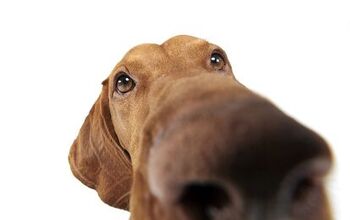New Motion Analysis Lab Helps Diagnose and Prescribe Rehab for Injured

It’s because their four-legged patients couldn’t tell them where it hurt that veterinarians at the University of Missouri decided to revolutionize the diagnosis and treatment of small animals with musuloskeletal injuries through the use of specialized cameras that are quite frankly, right up there with what Hollywood filmmakers use to make blockbuster special effects.
In the past, limps, whines and winces have been the only clues that vets have had to work with when assessing arthritis or soft tissue injuries in our pets and then prescribing a treatment. Not anymore!
Related: What You Should Know About Canine Hydrotherapy
The University’s Motion Analysis Lab (MAL) has developed a camera that use pressure-sensitive plates to capture the real-time movement of an injured animal via special “markers”.
According to Bryan Torres, assistant professor of small animal orthopedic surgery at the University’s College of Veterinary Medicine, “The force plates and camera equipment allow us to see how much weight the dog is putting on each limb and to track the movement of their joints. We can perform gait analysis on all animals with osteoarthritis and soft-tissue injuries, and monitor pain management strategies all in the same lab.”
The university’s current roster of patients include not only companion animals, such as sporting dogs and canine agility athletes, but also working, service and military dogs who have been injured on the job. In addition to not only easing the dog’s discomfort, effective rehab also protects the valuable investment made in the years of training that professional dogs undergo.
Related: What Supplements Help Relieve Arthritis in Dogs?
All data collected is not only critical to identifying the cause of pain but also prescribing and tracking appropriate rehabilitation methods (think underwater treadmill) to ensure a full and speedy recovery.
Torres is confident that the minimally invasive orthopedic techniques, rehabilitation practices and pain management methods learned in the MAL will be translatable to humans and is now working jointly (no pun intended) with the Missouri Orthopedic Institute.

Sharing space with three seriously judgy Schnoodles and a feline who prefers to be left alone. #LivingMyBestLife
More by Mary Simpson























